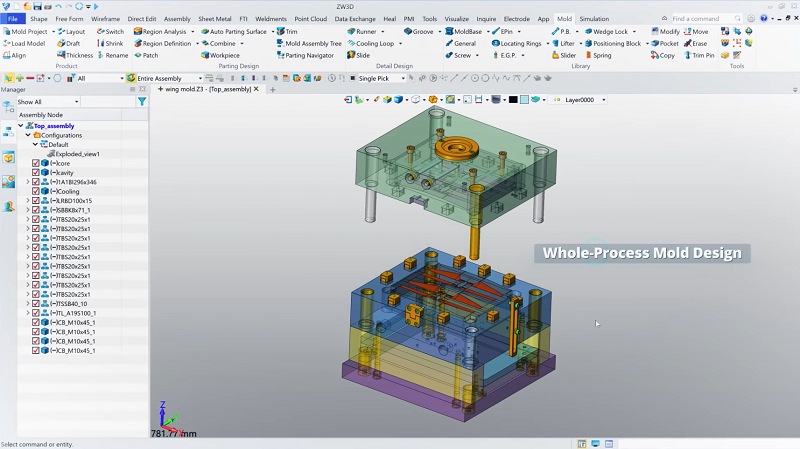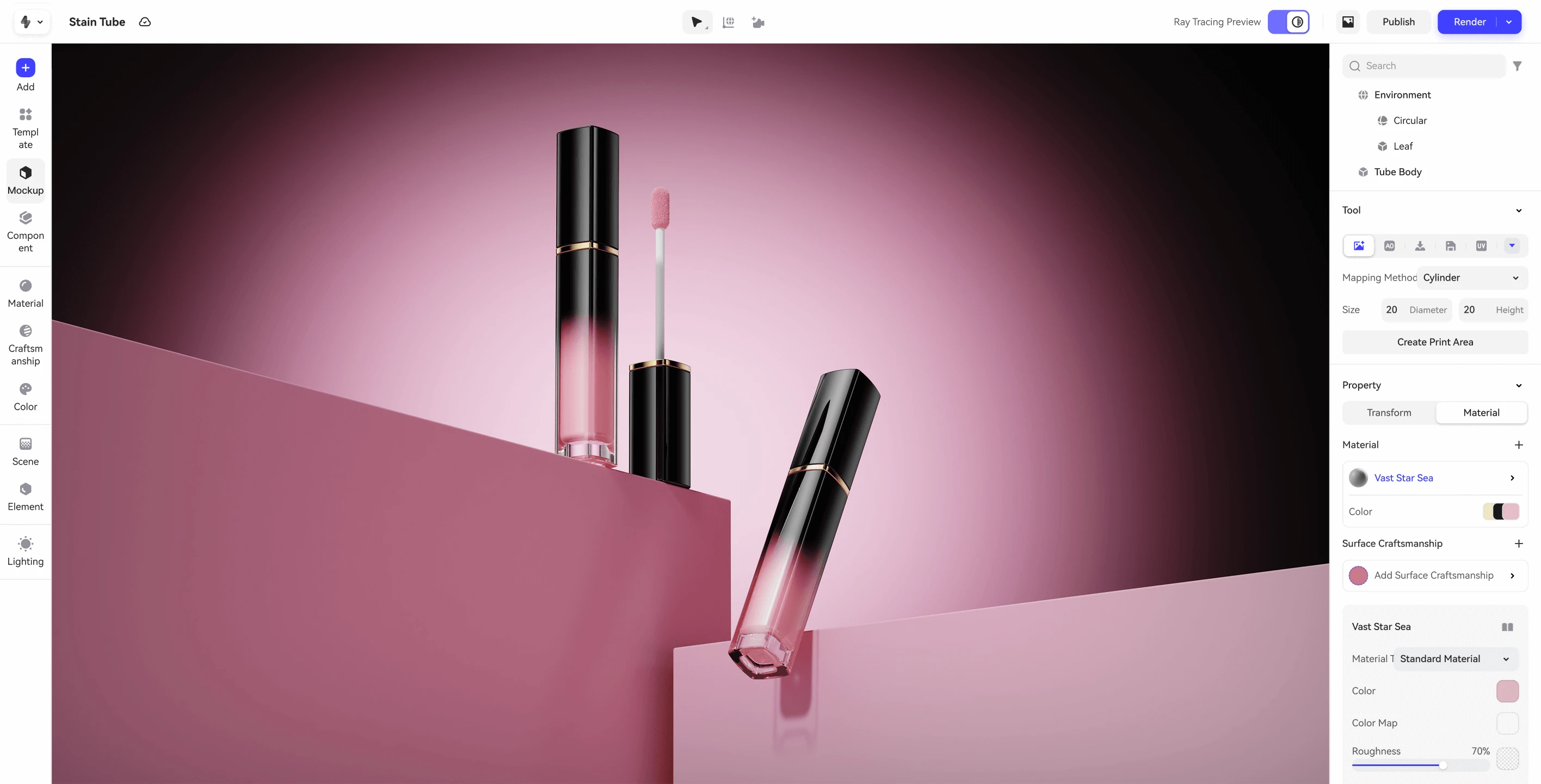Look at the chair you're sitting in. Or the water bottle on your desk. Or the phone in your hand. We see these as simple, singular objects. But they aren't. They are the end result of a thousand silent debates, a symphony of invisible decisions, questions, and compromises.
That symphony, that entire journey from a vague human need to a finished, tangible object that feels just right in your hand—that is product design.
The most common misconception is that product design is just about making something look pretty. A cool shape, a trendy color. That's a tiny, surface-level part of it. The true, deeper purpose of product design is to be the bridge between a human problem and a commercial solution. It's the art and science of making things that don't just look good, but work and feel good for the people who use them.
In this guide, we'll take a journey through that entire process, from the first spark of an idea to the final product you can hold, and explore how modern digital tools have revolutionized every single step.
A Simple Definition: Where Human Need and Business Goals Meet
Product design is the discipline of finding the perfect, harmonious overlap between three critical forces:
 User Desirability: Is this a product people want? Does it solve a real problem for them? Is it easy and enjoyable to use?
User Desirability: Is this a product people want? Does it solve a real problem for them? Is it easy and enjoyable to use? Business Viability: Can we build, market, and sell this product in a way that is profitable and sustainable for our company?
Business Viability: Can we build, market, and sell this product in a way that is profitable and sustainable for our company? Technical Feasibility: Can this actually be manufactured with current technology and at a reasonable cost?
Technical Feasibility: Can this actually be manufactured with current technology and at a reasonable cost?
When a product designer successfully balances all three—when a product is desirable, viable, and feasible—that's when you get magic. That's when you get an iconic product.
The Product Design Process: The Journey from "What If?" to "What Is"
The path from an idea to a finished product is a structured journey. While every project is different, the core stages are universal.
Stage 1: Empathy & Definition (The "Why")
Every great product begins not with a cool idea, but with a deep understanding of a person's problem. This crucial first stage is all about empathy. Designers conduct user research, interviews, and observations to find the friction points in people's lives. They don't ask "What should we build?" They ask "What problem should we solve?"
Stage 2: Ideation & Concept (The "How It Could Be")
Once the problem is clearly defined, the creative floodgates open. This is the brainstorming stage, a world of sketches, "what if" scenarios, and raw ideas. The goal here isn't to find the perfect solution, but to explore a wide range of possibilities. No idea is too wild. It's about creative exploration and testing the very boundaries of the problem.
Stage 3: The Digital Blueprint (3D Modeling & CAD)
This is the moment ideas get real. A beautiful sketch is a promise; a precise 3D model is a plan. This is where designers and engineers turn a 2D concept into a detailed, digital blueprint that can actually be manufactured.
To do this, they rely on powerful CAD (Computer-Aided Design) software. Tools like ZW3D from ZWSoft are where the magic of engineering happens. They allow designers to define every curve, every dimension, every part, and every a-symmetric assembly with absolute, micron-level precision. A robust and accurate CAD model is the essential foundation for everything that follows. It is the single source of truth for the product.
 ZW3D
ZW3D
Stage 4: Visualization & Validation (The "Wow" Moment)
A technical CAD model is a masterpiece of precision, but it's a blueprint. It's silent. It doesn't convey the emotion, the feel, or the final beauty of the product. How do you see what the product will actually look and feel like sitting on a store shelf?
This is where the transformative power of product rendering comes in. Once the digital blueprint is built in a tool like ZW3D, designers need to bring it to life visually. The smartest and fastest way to do this is with a modern online rendering platform like Realishot. You can import your ZW3D model directly into its browser-based studio and, in minutes, create stunning, photorealistic images to validate CMF decisions, get client buy-in, and create marketing assets.
 A stunning photorealistic render of a cosmetic product, created with Realishot to validate its product design and CMF choices.
A stunning photorealistic render of a cosmetic product, created with Realishot to validate its product design and CMF choices.
Stage 5: Prototyping & Testing (The Reality Check)
With a design modeled and visualized, the final step before mass production is to create physical prototypes. These are tested with real users to see how they hold, use, and react to the product in the real world. The feedback from this stage often leads to small but crucial refinements back in the CAD and visualization stages, ensuring the final product is truly ready for its debut.
The Skills of a Great Product Designer
Product design isn't just one skill; it's a rich blend of art, science, and business strategy. A great product designer is:
 Empathetic: You have to be able to truly get inside your user's head to understand their needs.
Empathetic: You have to be able to truly get inside your user's head to understand their needs. Creative: You need the ability to imagine novel solutions to complex problems.
Creative: You need the ability to imagine novel solutions to complex problems. A Problem-Solver: You must be able to break down big challenges into small, manageable parts.
A Problem-Solver: You must be able to break down big challenges into small, manageable parts. A Visual Communicator: Whether through a quick sketch or a photorealistic render, you must be able to share your vision with others.
A Visual Communicator: Whether through a quick sketch or a photorealistic render, you must be able to share your vision with others. Strategic: You need to understand the business goals and technical constraints and find a solution that succeeds within them.
Strategic: You need to understand the business goals and technical constraints and find a solution that succeeds within them.
Conclusion: More Than an Object, It's an Experience
The best products in our lives—the ones that feel intuitive, delightful, and essential—are not just collections of features. They are thoughtfully crafted experiences. Product design is the art and science of creating those experiences. It is a complex and challenging journey.
But that journey has been revolutionized by a new generation of interconnected digital tools. From a precision digital blueprint built in a powerful CAD program like ZW3D, to a stunning, emotional visual brought to life in a cloud-native studio like Realishot, designers have never had more power at their fingertips. It is an unprecedented ability to turn a human problem into a beautiful, functional, and tangible solution.
